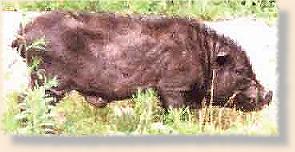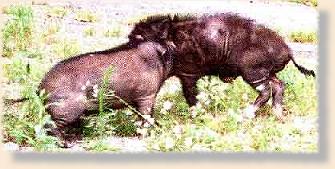Picture this. You are poling along the Clinkers, just off the west bank. Everything
is quiet. All you hear is the wisp of the fly line making its run in the forward and back
cast. It is a silent, delicate sound made by the action of the rod, in a fluid motion by
the angler. She is quiet. No words exchange. You are on a school of redfish.
Following them south. Silently, each stroke of the pole pushes you closer to the
school. The water is crystal clear and you can see eighty feet ahead with no problem.
The molten forms stand out against the dull green grass. You are moving along the
old dredge line about 75 feet from the shore.
You're closing on the fish: eighty feet, sixty feet, and then fifty feet. The angler makes
ready for her cast. Off to the side a shadow movement catches your attention. But
concentration is on the school and the angler from Savannah. The boat is stopped.
The pole is pushed deep into the mud to slow your forward motion. Not wanting to
overrun the school, hand signals are used to point out the quarry. The first cast is
released. The fly settles. She starts a slow retrieve, about three inches and stops.
Letting the fly settle again, she starts another. You can see the redfish turn and move
towards the fly. Almost silently, in a whisper, "let the fly sink."
Suddenly your world explodes. Noise and crashing branches come from the lowland
near the shore. The water erupts with confusion and the school bolts. It sounds like
a tank coming through the trees. The poor angler is stunned. "What the hell was that?"
she asks.
"Wild pigs, they are pretty common around here in the fall."
Soon five or six pigs are in the water, swimming after one another, oblivious to your presence.
Then they rush back into the brush and out of sight. Others come and start thrashing
around in the shallow water. Oinking, snorting and grunting, they sound like the exhaust
from a two-stroke engine. As mad as you will get, it all melts away when you see these
charming little (big) buggers. Over in some brush the grass is waving back and forth,
two pigs come waltzing out from behind a tree. It's probably they only privacy they will
get. If you pole right up to the bank, they'll charge down at you. How can you blame
them? You'd better move, unless you want a 300-pound wild pig in your boat.

It's like a moose rut or something. There were hundreds of these animals roaming in and
out of the trees. They run in herds called sounders. Wild pigs are interesting to watch.
They have a social structure that is fairly complex. Wild pigs, and domestic ones too, are
very intelligent and prefer a varied diet of roots, fruits, nuts (acorns) small animals and fish.
The good news is they will eat rattlesnakes. They wait for the snake's missed strike then
jump on the snake with sharp hooves. Wild pigs prefer clean water and a clean bed made
up of thick brush. The habitat of Northern Florida is will suited. You just have to be
careful when you are in the woods around Shiloh.
I ran into a sow and seven piglets while fishing south of Haul-Over one day. My dog,
Buster, and I were fishing off a thicket when I heard the squealing. I immediately got the
dog and myself back to the truck in time to watch the marauding band from the truck
windows.
All pigs have much in common. The snout with its tough flexible disk-like tip is the most
prominent feature. It's a combination steam shovel and bulldozer for digging, pushing and
lifting. A pig's bristles give little protection against cold. With no sweat glands in the skin,
they suffer from the heat. So they look to the swamps and forests in warm, temperate
regions. They are prolific breeders and bear litters from 3 to 12 striped young in a nest
hidden in the thick brush. The males, or boars, sometimes reach 350 pounds and 40 inches
at the shoulders. They can be very powerful adversaries. They hunt in small bands,
duel for position and mates, fend off predators and to enjoy a balanced diet.

It makes you stop and take notice. You can't imagine the racket from a herd of wild pigs.
They have the greatest time. Running a break neck speeds through and around trees, into
the shadows and back to the light. They come right down to the water's edge to look at
you. Then turn around and bolt. Some will dig their noses into the dirt and push it up,
grunting all the time. In repeated fashion they'll push their noses along the muddy ground.
There are little pigs, big pigs, black ones, white/black, brown/black/white, spots or stripes.
What a colorful sight. You'd be willing to pay for a seat like this.
It happens the same time every year. Early in the morning or late in the afternoon, out of
the clear blue, you'll hear squeaking and squealing. West of the Clinkers, in the small scrub,
it's time for a wild hog jamboree. This is a pig's version of Woodstock. The whole clan
is there. I'm sure it's a 'right of passage' or something. It was a nice respite from an
otherwise dull afternoon in the Lagoon. We found the school again, and had two nice
hookups. The thing with redfish is they usually return to the spot they were chased from.
Just wait awhile, and they'll be back.
Catch/Release: it's the right thing to do. ~ Doug.
About Doug:
Doug is a USCG Licensed Captain and fly-fishing guide from New Smyrna Beach, FL
a member of CCA, FFF, AFF, APCA, FOWA, the Action Craft Saltwater Team,
and the Orvis and Redington Pro-Guide Program. He can be reached at 386-679-5814.
|







